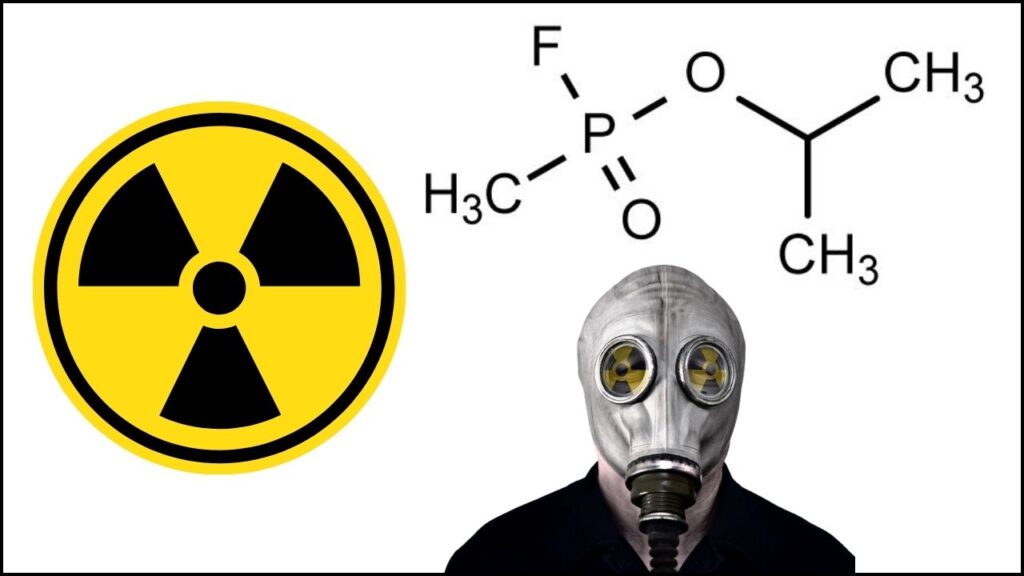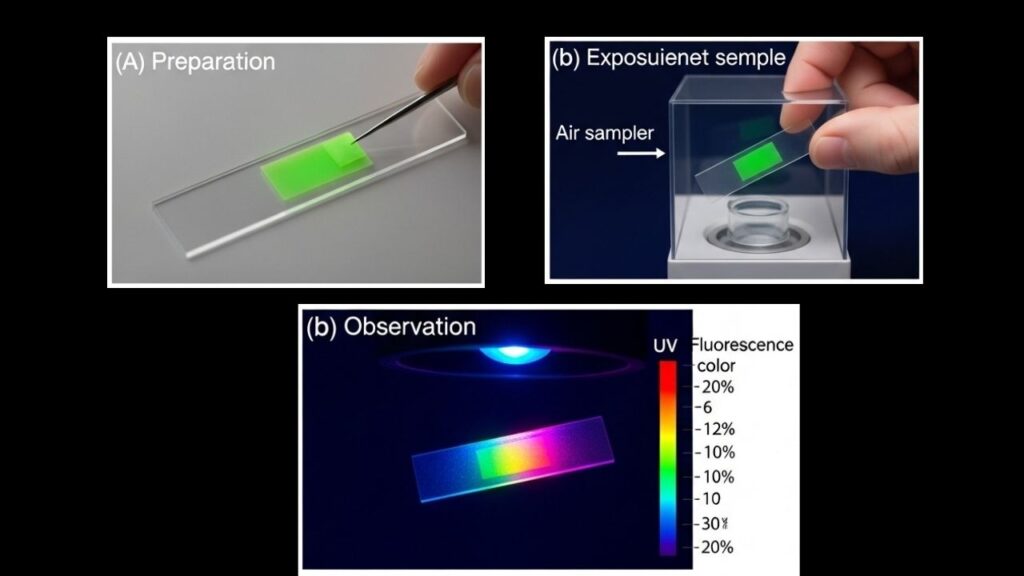Scientists Develop Ultra-Sensitive Fluorescent Sensor: Scientists have recently achieved a major breakthrough by developing an ultra-sensitive fluorescent sensor capable of detecting the deadly nerve agent sarin gas almost instantly. This cutting-edge technology offers rapid, precise, and portable detection solutions, which could revolutionize chemical threat response and enhance global safety measures.

Sarin is one of the most toxic nerve agents known, classified as a weapon of mass destruction by international conventions. Detecting it swiftly and reliably in the environment has long been a challenge for scientists, military forces, and emergency responders alike.
The development of ultra-sensitive fluorescent sensors that can detect sarin gas instantly is a groundbreaking advancement in chemical warfare defense and public safety. These sensors combine scientific rigor, fast response, and ease of use to provide a critical tool for detecting one of the world’s deadliest toxins.
By empowering frontline responders and security agencies with real-time sarin detection, this technology holds the promise of saving countless lives and preventing chemical disasters. Continued research and innovation will likely expand its capabilities and accessibility in the coming years.
What Is Sarin Gas? Understanding the Threat

Sarin (chemical formula: C₄H₁₀FO₂P) is an organophosphorus compound developed originally as a pesticide but quickly repurposed as a chemical warfare agent due to its extreme toxicity. It belongs to a class of chemicals known as nerve agents that disrupt the nervous system by inhibiting the enzyme acetylcholinesterase.
This enzyme’s role is to break down acetylcholine, a neurotransmitter responsible for transmitting signals between nerve cells. When acetylcholinesterase is blocked by sarin, acetylcholine accumulates, leading to uncontrolled muscle contractions, paralysis, respiratory failure, and often death.
Key facts about sarin gas:
- Colorless and odorless, making detection without instruments very difficult.
- Extremely lethal: exposure to even 0.5 mg/m³ for a few minutes can be fatal.
- Can be absorbed via inhalation, skin contact, or eye exposure.
- Classified as a Schedule 1 substance under the Chemical Weapons Convention (CWC).
Why Detecting Sarin Quickly Is So Critical
Because sarin acts rapidly on the nervous system, early detection is crucial for saving lives and mitigating damage. Without immediate identification, affected individuals may succumb before receiving medical treatment.
Current standard detection methods involve:
- Gas chromatography-mass spectrometry (GC-MS): highly accurate but requires bulky lab equipment.
- Colorimetric test kits: slower, less sensitive, often give false positives.
- Ion mobility spectrometry: portable but less selective.
These limitations highlight the need for fast, portable, highly sensitive, and selective detection methods — exactly what fluorescent sensors now promise.
The Science Behind Ultra-Sensitive Fluorescent Sensors for Sarin
How Fluorescent Sensors Work
Fluorescent sensors detect specific chemicals by using molecules that change their fluorescent properties (light emission) when they react with the target substance. This allows for visual or instrument-based detection of trace chemicals.
The latest sensors designed for sarin detect its unique chemical signature — particularly the fluorophosphonate group present in the molecule.
Key Sensor Types
- Boron-Difluoride Complex Film (BODIQ-TPE): Developed by researchers at the Chinese Academy of Sciences, this film contains molecules that fluoresce brightly and change color immediately when sarin gas is present. The reaction occurs in less than 2 seconds at concentrations as low as 0.7 parts per billion (ppb). This sensor is advantageous because:
- It is reusable.
- Offers a distinct color change visible under UV light.
- Can discriminate sarin from similar chemicals.
- Dual-State Fluorescent Probe (PQSP): Scientists at the University of Calcutta designed this probe to function in both liquid and vapor phases. It detects sarin simulants (chemicals with similar properties) like diethyl chlorophosphate (DCP) with an ultrafast response of about 3 seconds.
- Chromo-Fluorogenic Paper Strip Test (BDHA): The Indian Institute of Science (IISc) introduced paper strip tests impregnated with chromo-fluorogenic compounds. These strips change color when exposed to sarin simulants, are portable, cost-effective, and can be regenerated for repeated use.
Performance Metrics and Validation
- Detection limits for these sensors range from 0.7 to 3 ppb, significantly below lethal exposure levels.
- Response times vary from under 2 seconds to 3 seconds, allowing near real-time monitoring.
- Sensors have undergone rigorous testing with sarin simulants, ensuring safety during development and reliability in actual scenarios.
- Selectivity tests confirm the ability to differentiate sarin from other organophosphates and common chemical interferents.
For detailed scientific validation, the peer-reviewed study published in Sensors and Actuators B: Chemical is a good resource (PubMed link).
Practical Applications of Fluorescent Sarin Sensors
Military and Defense
- Equipping soldiers with compact sensors provides early warnings, reducing casualties.
- Rapid alerts enable quick deployment of antidotes like atropine and pralidoxime.
- Portable sensors facilitate chemical reconnaissance missions in hostile environments.
Emergency Response and Civil Defense
- First responders and HazMat teams can instantly assess chemical threats at incident sites.
- Sensors allow safe evacuation routes and minimize responder exposure.
- Integration with communication systems improves coordinated response.
Public Security and Infrastructure Protection
- Sensors can be installed in airports, subway stations, stadiums, and government buildings for continuous air monitoring.
- Early detection reduces risks in case of terrorist chemical attacks.
- Supports real-time public alert systems.
Environmental Monitoring
- Industrial sites handling organophosphates benefit from continuous monitoring.
- Rapid detection assists in compliance with safety regulations and immediate containment.
How to Use Fluorescent Sensors for Sarin Detection: A Step-By-Step Guide

- Sensor Preparation:
- Most sensors come ready to use.
- Paper strip sensors may require unfolding and exposing under UV light for baseline fluorescence.
- Exposure to Air Sample:
- For gas detection, hold the sensor near the suspicious area.
- The sensor reacts immediately if sarin or similar compounds are present.
- Observation of Fluorescence or Color Change:
- Look for a visible color shift or increased fluorescence.
- Some sensors glow brightly under UV light, making detection straightforward even in low light.
- Confirmatory Testing:
- If the sensor indicates sarin presence, further confirmatory tests (e.g., portable GC-MS or lab analysis) may be conducted for legal or medical actions.
- Trigger Emergency Protocols:
- Immediately alert authorities.
- Initiate evacuation, decontamination, and medical treatment procedures as per established protocols.
Important Safety and Handling Notes
- While sensors detect sarin simulants safely, real sarin gas testing requires strict safety measures in controlled environments.
- Personnel should be trained in chemical hazard handling and sensor operation.
- Sensors should be stored according to manufacturer instructions to preserve sensitivity.
Future Prospects and Research Directions
Ongoing research aims to:
- Enhance sensor durability and reusability for prolonged field use.
- Integrate sensors into wearable technology for continuous monitoring.
- Develop multi-agent sensors capable of detecting a broad range of chemical threats.
- Improve data transmission for real-time remote monitoring via IoT platforms.
Advancements in nanotechnology and materials science continue to push the boundaries of what these sensors can achieve, promising even safer and smarter chemical detection in the near future.
New 3D Textile Material Designed to Improve Mobility and Comfort in Wearable Tech
Researchers Develop Early Prototype Of Sodium-Air Fuel Cell With Promising Efficiency
FAQs About Scientists Develop Ultra-Sensitive Fluorescent Sensor
1. How do fluorescent sensors compare with traditional detection methods?
Fluorescent sensors offer much faster response times and greater portability than traditional lab-based methods like gas chromatography. They allow for on-the-spot detection without specialized training or equipment.
2. Can these sensors be used by civilians?
Currently, these sensors are mainly deployed by military and emergency personnel. However, with further development and cost reduction, civilian use for industrial safety or homeland security may become feasible.
3. What is the shelf life of these sensors?
Depending on the sensor type and storage conditions, shelf life ranges from several months to over a year. Manufacturers provide detailed storage instructions to maintain sensor efficacy.
4. Are there limitations to this technology?
Sensors can sometimes give false positives with chemically similar substances. Confirmatory tests are recommended for legal and medical decision-making.






